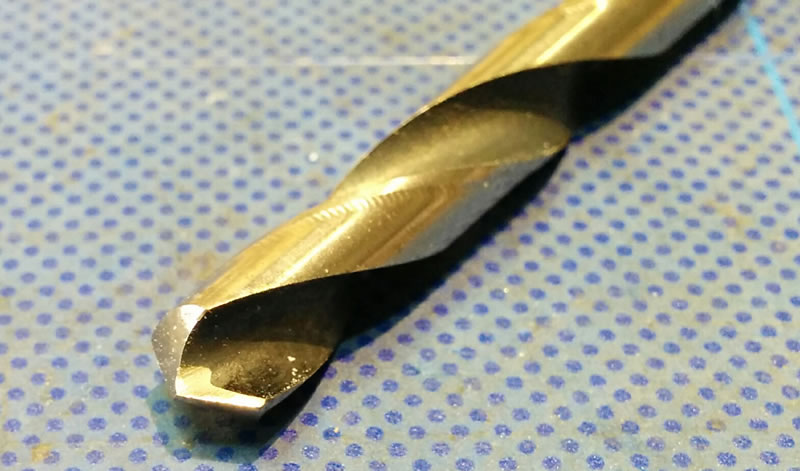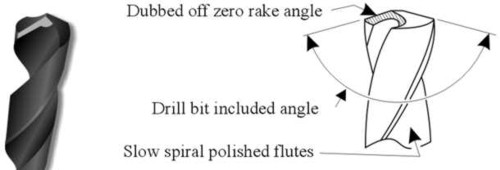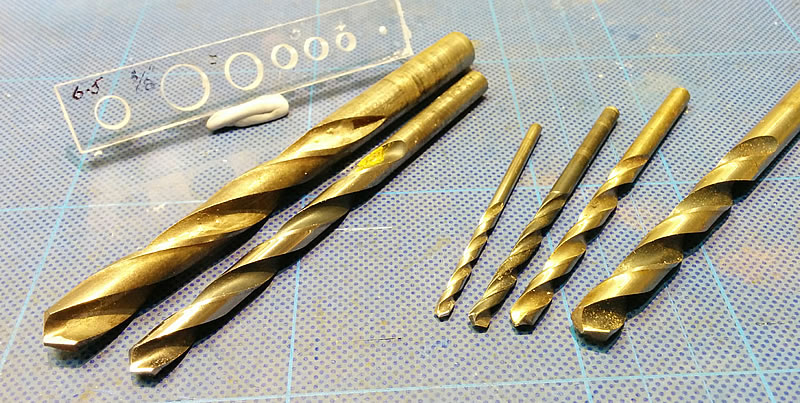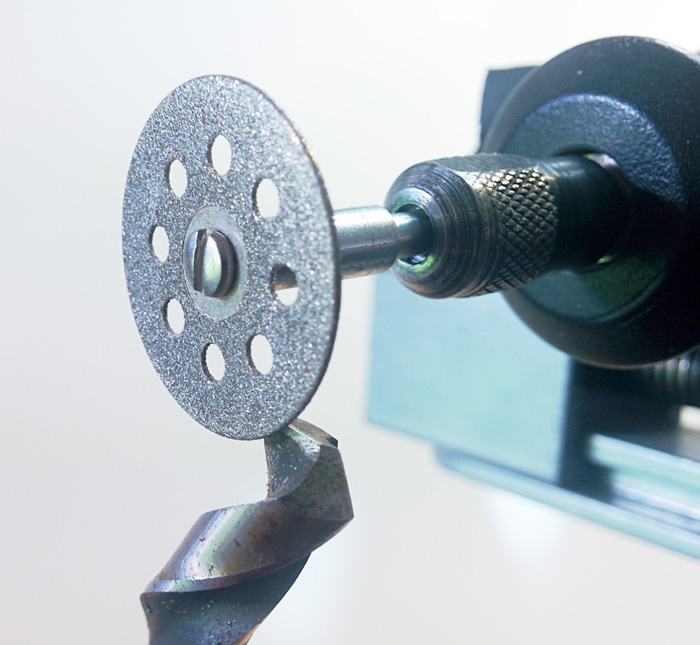Drilling Acrylic Panels at "Kalrail" Rick Fletcher - NSW Australia 6-Feb-2016 |
| Drilling holes in acrylic sheet is easy with a small modification to the cutting edge of the drill. You should then have clean holes with no cracking in the acrylic. |

| Shown above is a small drill with the cutting edge suitably modified such that it has a "scraping" action, rather than digging into the plastic. The diagram below shows the effect required. Some sources indicate that the included angle of a drill for acrylics should be around 60° rather than the normal 120° I don't subscribe to this view as it is already difficult enough to grind the cutting edge of very small drills without having to alter the included angle as well. I use standard drills and just "blunt" the cutting edge as shown later. |


| Here is a set of modified drills I keep on the workbench with a piece of drilled acrylic so that I can test the fit of things like switches, bolts and screws etc. |

| This is one way to produce the "scraping" effect on the cutting edge. Use a Dremel tool mounted in a holder or in a vice with rubber jaws. Make sure you wear eye protection and a face shield if you are using an abrasive disk. It is also possible to "touch" the cutting edge on a fine bench grinding wheel provided it has sharp corners but the Dremel is best for tiny drills. This photo shows a diamond impregnated disk but a normal brown abrasive disk will work (with a face shield). Do both cutting edges on the drill. I always use a magnifier to carry out this operation. |
Here is an interesting link from an Aussie Plastic Fabricator on how a pro sharpens his drills and other tools for plastic.
